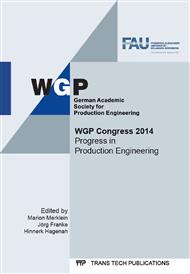p.317
p.325
p.333
p.341
p.351
p.357
p.365
p.373
p.381
Adaptive Friction Bearing for Reduction of Stick-Slip Effects
Abstract:
The motion quality of high precision feed drives is often limited by nonlinear friction effects. This paper presents an approach of using ultrasonic vibrations integrated into the linear bearings of the feed drive in order to control the friction. Measurement results of an ultrasonic excited prototype are shown and a control strategy for stick-slip reduction is proposed.
Info:
Periodical:
Pages:
351-356
Citation:
Online since:
September 2014
Authors:
Keywords:
Price:
Сopyright:
© 2014 Trans Tech Publications Ltd. All Rights Reserved
Share:
Citation:


